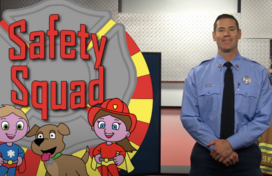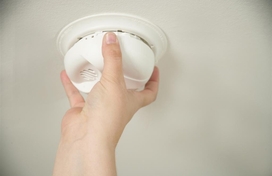
Every year, the National Fire Protection Association releases the theme for Fire Prevention Week. This year’s FPW campaign is: “Fire Won't Wait, Plan Your Escape!” Practice your home fire escape drill at least two times every year with everyone in your home. It's a good idea to practice at night and during the day. Make sure guests are aware of the plan too. Remember to include pets and small children while creating your plan as they will require extra assistance.
If you ever have any questions about fire safety, please contact our Community Outreach Team: 410-313-2016.
Learn more about home escape planning from the National Fire Protection Association.
Check out this handy Home Safety Action Plan too.
FAQ
From the National Fire Protection Association:
What’s the difference between smoke alarms and carbon monoxide (CO) alarms? Why do I need both?
Smoke alarms sense smoke well before you can, alerting you to danger. In the event of fire, you may have as little as two minutes to escape safely, which is why smoke alarms need to be in every bedroom, outside of the sleeping areas (like a hallway), and on each level (including the basement). Do not put smoke alarms in your kitchen or bathrooms.
Carbon monoxide is an odorless, colorless gas that displaces oxygen in your body and brain and can render you unconscious before you even realize something is happening to you. Without vital oxygen, you are at risk of death from carbon monoxide poisoning in a short time. CO alarms detect the presence of carbon monoxide and alert you so you can get out, call 9-1-1, and let the professionals check your home.
What if someone in my home is deaf or hard of hearing?
There are smoke alarms and alert devices that alert people who are deaf or hard of hearing. These devices include strobe lights that flash to alert people when the smoke alarm sounds. Pillow or bed shakers designed to work with your smoke alarm also can be purchased and installed.
How do I know which smoke and CO alarm to choose for my home?
Choose an alarm that is listed with a testing laboratory, meaning it has met certain standards for protection.
CO alarms also have a battery backup. Choose one that is listed with a testing laboratory. For the best protection, use combination smoke and carbon monoxide alarms that are interconnected throughout the home. These can be installed by a qualified electrician, so that when one sounds, they all sound. This ensures you can hear the alarm no matter where in your home the alarm originates.
Safety Tip Sheets from NFPA
Check out these safety tip sheets from NFPA. Available in several languages:
https://www.nfpa.org/Events/Events/Fire-Prevention-Week/Safety-Tip-Sheets
Additional Ways to Stay Fire Safe
- Test smoke and carbon monoxide alarms monthly to ensure they're working properly.
- Close your bedroom door before you go to sleep. Closing your door can help prevent the spread of smoke and fire.
- Always let ashes/coals from your fireplace, fire pit, or grill cool for at least 48 hours, or completely soak them with water before disposing of them in a metal trash can, away from anything combustible.
- Have heating equipment such as chimneys and wood stoves cleaned and inspected annually by a certified professional.
- Place used smoking materials (cigarettes, cigars, etc.) in a sturdy ash trash, away from combustibles. Do not toss used cigarettes out of your car window. You could potentially start a brush fire.
- Stay safe in the kitchen: keep an eye on what you fry. Keep anything flammable away from the stove.
- A generator should be used in a well-ventilated area away from any doors, windows, or vent openings.
- Always know two ways out of your home in case of an emergency. Have an escape plan and practice it regularly.

